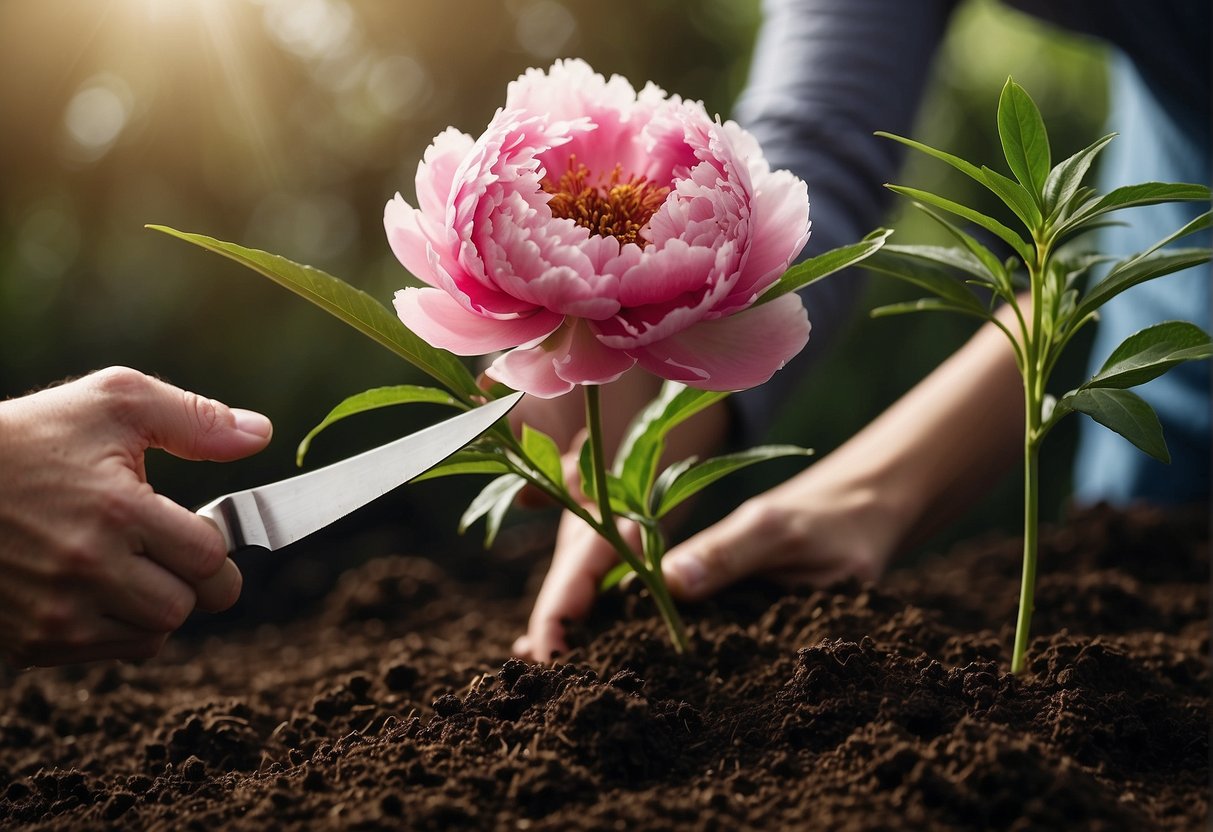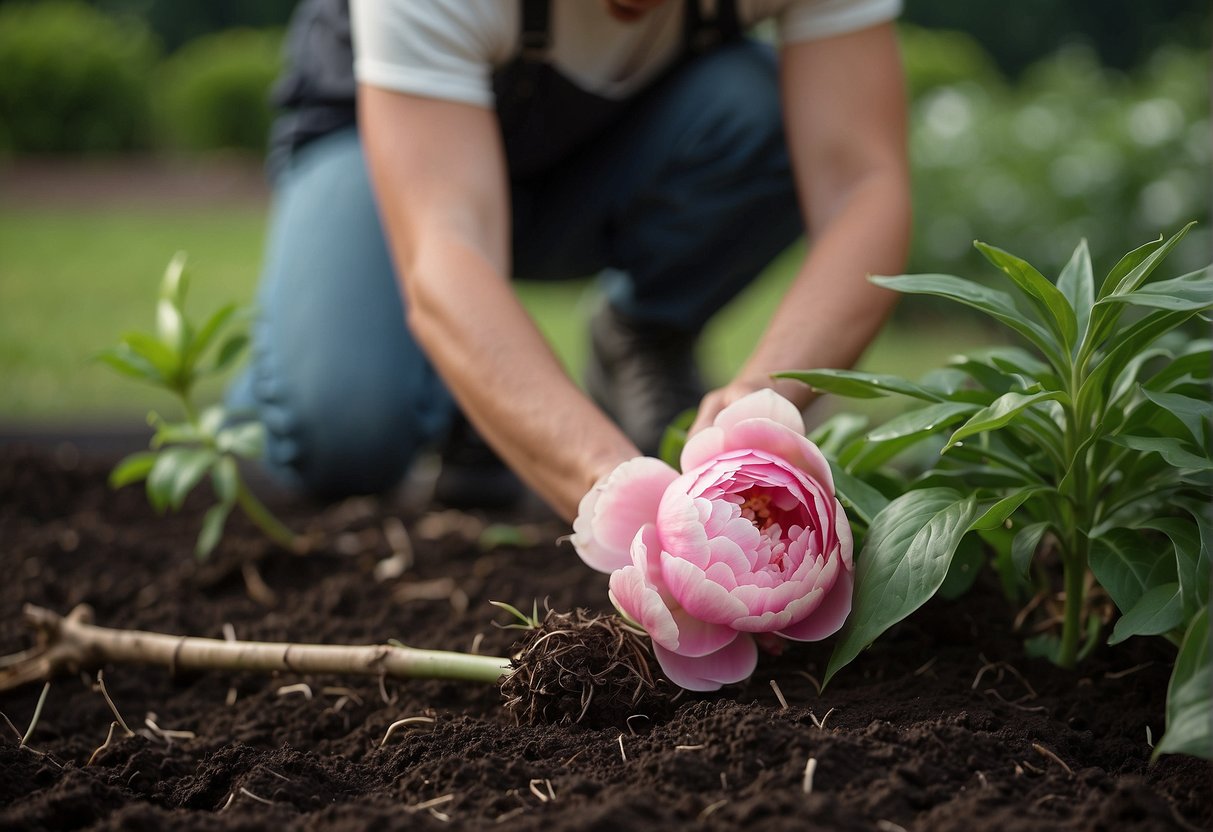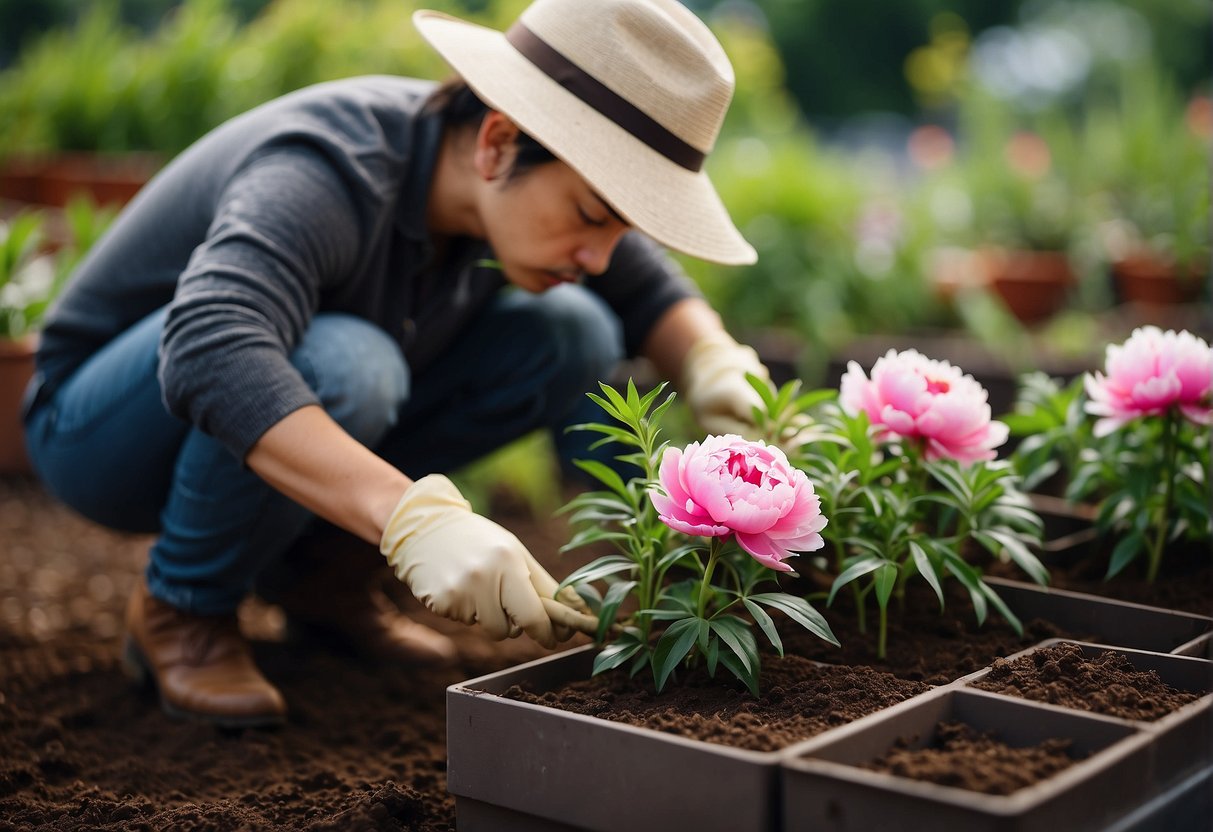How to Propagate Peonies: A Step-by-Step Guide
Peonies are beautiful, fragrant flowers that can add a touch of elegance to any garden. Propagating peonies is a great way to expand your collection or share your favorite varieties with friends and family. While it may seem intimidating at first, propagating peonies is actually quite simple and can be done with just a few basic tools and techniques.

To propagate peonies, it is important to understand the different methods available. The most common methods include division, seed propagation, and grafting. Each method has its own advantages and disadvantages, and the best method for you will depend on your goals and experience level. Regardless of the method, the key to successful propagation is to start with healthy, disease-free plants and to follow proper planting and care techniques.
In this article, we will explore the different methods for propagating peonies and provide step-by-step instructions for each. Whether you are a seasoned gardener or a beginner, this guide will give you the knowledge and confidence you need to successfully propagate your own peonies and enjoy their beauty for years to come.
Understanding Peony Propagation
Peonies are beautiful flowers that can be propagated through various methods. Understanding the different propagation methods and the best time for propagation is essential for successful peony propagation.
Propagation Methods
There are four main methods for propagating peonies: division, cutting, seed, and grafting. Division is the most common and easiest method for propagating peonies. It involves dividing the root ball of an established plant into smaller sections and replanting them. Cutting involves taking a stem cutting from an established plant and rooting it in soil or water. Seed propagation involves planting peony seeds and waiting for them to grow into mature plants. Grafting involves joining two different peony plants together to create a new plant.
Best Time for Propagation
The best time for peony propagation depends on the method being used. Division should be done in the fall when the plant is dormant. Cutting should be done in the spring or early summer when the plant is actively growing. Seed propagation should be done in the fall when the seeds are mature. Grafting should be done in the spring when the plants are actively growing.
Timing is crucial for successful peony propagation. It is important to choose the right time for the specific method being used to ensure the best chance of success. With proper timing and technique, anyone can successfully propagate peonies.
Preparing for Propagation

Selecting the Right Peony
Before propagating peonies, it’s important to select the right plant. Choose a healthy, mature plant that is at least three years old. Look for a plant that has multiple stems and a strong root system. Avoid selecting plants that are diseased or weak.
Tools and Materials Needed
To propagate peonies, you will need a few tools and materials. These include a sharp knife, spade, garden fork, soil, compost, organic matter, peat moss, and vermiculite.
It’s important to have a sharp knife to make clean cuts when dividing the peony roots. A spade and garden fork will be needed to dig up the peony plant and loosen the soil around the roots.
For soil, use a well-draining mix that is rich in organic matter. You can create your own mix by combining compost, peat moss, and vermiculite. This will provide the necessary nutrients and drainage for the peony to grow.
Propagation Process
Once you have selected the right peony plant and gathered the necessary tools and materials, you can begin the propagation process. The steps include:
- Dig up the peony plant, being careful not to damage the roots.
- Use a sharp knife to divide the root system into sections, making sure each section has at least three buds.
- Plant each section in a well-draining soil mix, making sure the buds are facing up and the roots are covered with soil.
- Water the newly planted sections thoroughly and keep the soil moist.
By following these steps, you can successfully propagate peonies and create new plants for your garden.
Division and Transplanting Technique
Dividing Peony Clumps
Peonies can be propagated through division, which involves separating the clump into smaller sections. This is typically done in the fall after the foliage has died back, or in early spring before new growth begins. The first step is to dig up the entire plant, being careful not to damage the roots.
Once the plant is out of the ground, the root ball can be carefully divided using a sharp knife or garden fork. Each division should have healthy roots and at least one or two eyes, which are the small pink or white buds on the crown of the plant. It’s important to avoid cutting too close to the crown buds, as this can damage the plant and reduce its chances of survival.
Transplanting New Divisions
After the divisions have been made, they can be replanted in a new location. The new planting hole should be dug to the same depth as the original hole, and the soil should be amended with compost or other organic matter to improve drainage and fertility. The divisions should be planted with the crown buds facing upwards and the roots spread out evenly.
Once the new plants are in the ground, they should be watered thoroughly to help establish the roots. It’s important to keep the soil moist but not waterlogged, as excess moisture can lead to root rot. Mulching around the base of the plants can help retain moisture and suppress weeds.
Overall, division and transplanting can be an effective way to propagate peonies and create new plants. With the right technique and care, the new divisions can quickly establish themselves and produce beautiful blooms for years to come.
Caring for Propagated Peonies

After successfully propagating peonies, it is important to take care of them properly to ensure their growth and longevity. This section will cover the essential care aspects for propagated peonies.
Watering and Feeding
Peonies require regular watering, especially during their first year after propagation. It is important to keep the soil consistently moist, but not waterlogged. Overwatering can lead to root rot, which can be fatal for peonies. On the other hand, underwatering can cause the plant to wilt and stunt its growth.
In addition to watering, peonies also require proper feeding. Fertilizing peonies with a balanced fertilizer in early spring and again in early summer will provide them with the necessary nutrients to thrive. It is important to avoid over-fertilizing, as this can lead to excessive foliage growth at the expense of flower production.
Mulching and Winter Protection
Mulching is an important aspect of caring for propagated peonies. A layer of organic mulch, such as shredded leaves or straw, can help retain soil moisture, suppress weed growth, and regulate soil temperature. Mulching also provides winter protection for the plant by insulating the roots from extreme cold.
In areas with harsh winters, it is important to provide additional winter protection for peonies. This can be done by covering the plant with a layer of burlap or frost cloth. It is also important to cut back the foliage in the fall and remove any debris around the plant to prevent the spread of disease.
In conclusion, proper care for propagated peonies involves regular watering, feeding with a balanced fertilizer, mulching, and winter protection. By following these guidelines, gardeners can ensure the health and longevity of their peony plants.
Troubleshooting Common Issues

Dealing with Pests and Diseases
Peonies are generally hardy plants, but they can be susceptible to certain pests and diseases. One common pest is the peony borer, which can cause damage to the stems and roots. To prevent infestations, it is important to keep the area around the peonies clean and free of debris. If pests are detected, they can be controlled with insecticides or by removing affected parts of the plant.
Diseases such as botrytis blight and powdery mildew can also affect peonies. These diseases are often caused by poor air circulation or excessive moisture. To prevent disease, it is important to space peonies properly and to avoid overwatering. If disease is detected, affected parts of the plant should be removed and destroyed to prevent further spread.
Addressing Slow Growth
Peonies can take several years to establish and may not bloom for the first few years. This can be frustrating for gardeners who are eager to see results, but patience is key. Peonies also require a dormant period during the winter months, so it is important not to disturb the plant during this time.
If peonies are not growing as quickly as expected, there may be several factors at play. Poor soil quality or lack of nutrients can stunt growth, so it is important to amend the soil with compost or fertilizer as needed. In some cases, peonies may also be damaged by harsh winter weather or other environmental factors. If this is the case, it may be necessary to prune damaged parts of the plant and provide extra care and attention until it recovers.
Frequently Asked Questions

What is the best method to propagate peonies from cuttings?
The best method to propagate peonies from cuttings is through division. This method involves digging up the mother plant and dividing the root system into smaller sections, each with at least one bud. The divided sections can then be replanted and will grow into new plants.
How do you successfully start a tree peony from cuttings?
Tree peonies can be propagated from cuttings using the same method as herbaceous peonies, but it is important to note that tree peonies can take longer to root and establish. It is recommended to take cuttings in the fall, when the plant is entering dormancy, and to use a rooting hormone to encourage root growth.
Can peony cuttings be rooted in water, and if so, how?
While it is possible to root peony cuttings in water, it is not recommended. Peonies are susceptible to rot, and rooting in water can increase the risk of fungal infections. It is best to propagate peonies through division or by rooting cuttings in a well-draining soil mix.
What steps are involved in propagating peonies from seed?
To propagate peonies from seed, the seeds must first be collected from the plant in the fall. The seeds should then be soaked in water for 24 hours before being planted in a well-draining soil mix. The seeds should be kept moist and warm, and can take up to two years to germinate.
How should peony seeds be collected and prepared for propagation?
Peony seeds should be collected in the fall, after the seed pods have turned brown and begun to split open. The seeds should be removed from the pods and soaked in water for 24 hours before being planted. It is important to note that peony seeds may not produce plants that are true to the parent plant, as they are often hybrids.
What are the essential care tips for peonies after propagation?
After propagation, peonies should be planted in well-draining soil and given plenty of sunlight. It is important to keep the soil moist but not waterlogged, as peonies are susceptible to root rot. Peonies should also be fertilized regularly with a balanced fertilizer, and deadheaded to encourage continued blooming.
